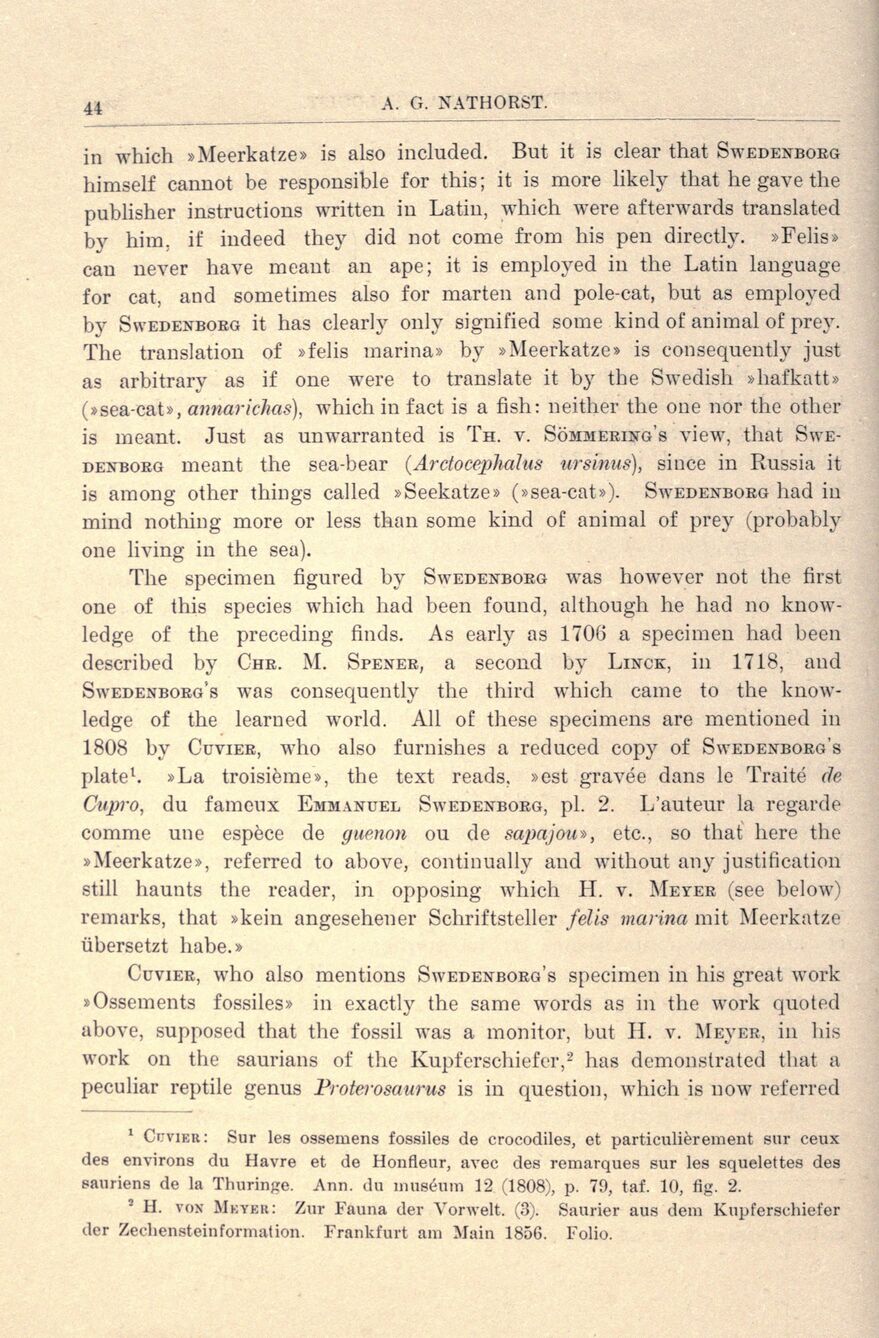
Full resolution (JPEG) - On this page / på denna sida - Sidor ...

<< prev. page << föreg. sida << >> nästa sida >> next page >>
Below is the raw OCR text
from the above scanned image.
Do you see an error? Proofread the page now!
Här nedan syns maskintolkade texten från faksimilbilden ovan.
Ser du något fel? Korrekturläs sidan nu!
This page has never been proofread. / Denna sida har aldrig korrekturlästs.
in which »Meerkatze» is also included. But it is clear that Swederborg
himself cannot be responsible for this; it is more likely that he gave tlie
publisher instructions written in Latin, which were afterwards translated
by him, if indeed they did not come from his pen directly. »Felis»
can never have meant an ape; it is emploved in the Latin language
for cat, and sometimes also for mårten and pole-cat, but as emploved
by Swederborg it has clearly only signified some kind of animal of prev.
The translation of »felis marina» by »Meerkatze» is consequently just
as arbitrarv as if one were to translate it by the Swedish »liafkatt»
(»sea-cat», annarichas), which in faet is a fish: neither the one nor the otlier
is meant. Just as unwarranted is Th. v. Sommerirg’s view, that
Swederborg meant the sea-bear (Arctocephalus ursinus), since in Russia it
is among other things called »Seekatze» (»sea-cat»). Swederborg had in
mind nothing more or less than some kind of animal of prey (probably
one living in the sea).
The specimen figured by Swederborg was however not the first
one of this species which had been found, although he had no
know-ledge of the preceding finds. As early as 1706 a specimen had been
described by Chr. M. Sperer, a second by Lirck, in 1718, and
Swederborg’s was consequently the third which came to the
know-ledge of the learned world. All of these specimens are mentioned in
1808 by Cuvier, who also furnishes a reduced copy of Swederborg’s
plate1. »La troisiéme», the text reads, »est gravée dans le Traité de
Cupro, du fameux Emmaruel Swederborg, pi. 2. L’auteur la regarde
comme une espéce de guenon ou de sapajou», etc., so that liere the
»Meerkatze», referred to above, eontinually and without any justification
still haunts the reader, in opposing which H. v. Meyer (see below)
remarks, that »kein angesehener Scliriftsteller felis marina mit Meerkatze
tibersetzt håbe.»
Cuvier, who also mentions Swederborg’s specimen in his great work
»Ossements fossiles» in exactly the same words as in the work quoted
above, supposed that the fossil was a monitor, but H. v. Mever, in his
work on the saurians of the Kupferschiefer,2 has demonstrated that a
peculiar reptile genus Proterosaurus is in question, which is now referred
1 Cuvier: Sur les ossemens fossiles de crocodiles, et particuliérement sur ceux
des environs du Havre et de Honfleur, avec des remarques sur les squelettes des
sauriens de la Thuringe. Ann. du niuséum 12 (1808), p. 79, taf. 10, lig. 2.
H. von Meyer: Zur Fauna der Vorwelt. (3). Saurier aus dem Kupferschiefer
der Zecliensteinformation. Frankfurt am Main 1856. Folio.
<< prev. page << föreg. sida << >> nästa sida >> next page >>